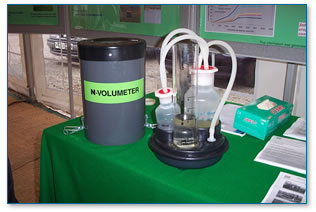livestock
manure
You might know this as animal
pooh or dung. Farm Yard Manure (FYM) can be treated as a waste product
or it can be applied to farmland as an organic fertiliser (W07b),
but like other fertilisers if it ends up in watercourses in large
quantities it can seriously affect the plant and animal life there.
 |
Dirty water from
Muck Heap |
To stop the livestock manure
being wasted and ending up in a nearby stream it is best to prevent
it from mixing with water. On a farm rainwater should be diverted
away from areas where livestock manure is collected to stop this
from happening. An enclosed area could be used to contain the manure.
In this way a farmer avoids waste and pollution.
When manure is moved from place
to place on a farm some of it can be dropped and end up being washed
into rivers and streams. A farmer might be able to make a reduction
in manure lost this way by using trailers or pumps to move manure
to a safe place instead of dumping it on concrete areas.
|
|
Manure in enclosed
area |
Cow pat - showing fly emergence
(no paprasite treatment)
|
 |
Manure Testing
Kit |
When using the livestock manure
as a fertiliser (FYM) the farmer should make sure that the amount
required has been correctly calculated. Having the soil tested for
nutrients already there can help the farmer to work out the actual
amount of fertiliser needed and therefore prevent waste.
By treating the livestock manure
as organic fertiliser and not as waste the manure is being recycled
(W11). Different animals eat different
foods and produce different types of manure. These can be valuable
fertilisers and understanding which manure is good for which crop
can save money and produce better results.
|

